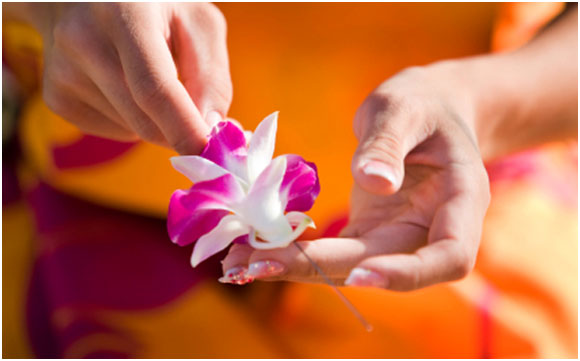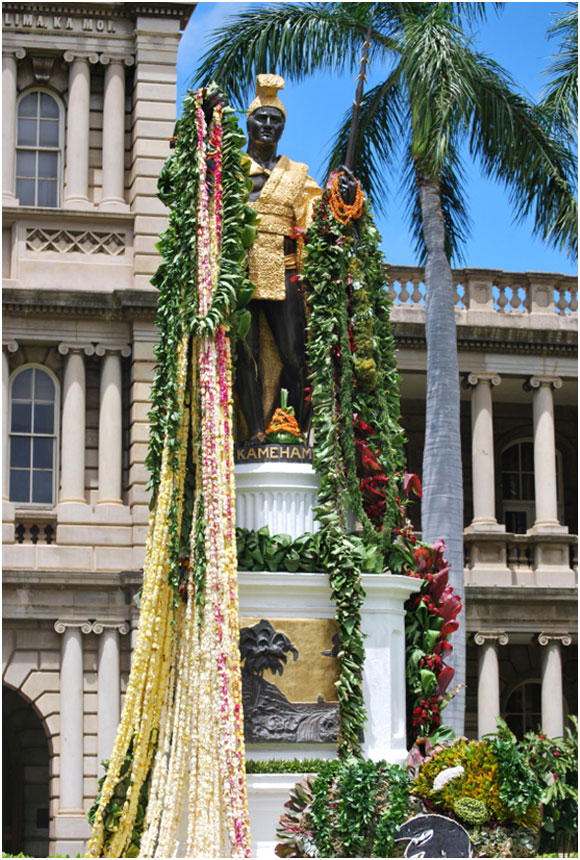LEI IT ON ME – ALL ABOUT LEI

While the custom of sharing lei is a practice that has spread around the world, its origins took root in the islands of Hawaii decades ago. Today, there are hundreds of types of lei – from less traditional candy and money lei, to the more commonly recognized plumeria or ti leaf lei. But no matter the form lei take, the meaning behind this tradition endures as a symbol and gift of aloha.
Today, many visitors are welcomed to Hawaii immediately after landing with a fresh lei. Legends say that if you throw your lei into the ocean and it returns to shore, that you are destined to return to the islands.
The Lei-gacy Behind Lei
The beautiful and fragrant tradition of lei voyaged to Hawaii with Polynesian explorers from Tahiti. These early settlers strung together a rich history, creating lei of flowers, leaves, shell, seeds, nuts, feather, as well as bone and teeth from various animals.
The Native Hawaiians made lei for one another and their gods with different flowers and materials, symbolizing different things. Following this custom, the most significant type of lei was the Maile lei, which amongst its many sacred uses when worn signified peace between opposing chiefs. The kukui nut lei was another sacred lei reserved only for alii (Hawaiian royalty).

May Day is Lei Day in Hawaii
Each year on May 1, Hawaii celebrates “Lei Day.” The holiday was first conceived in 1927 by poet and writer Don Blanding, out of concern that Hawaii’s rich tradition of lei making was wilting. Shortly thereafter, Lei Day became an official holiday in the territory of Hawaii in 1929 and continues today.
On Oahu, Lei Day festivities are centered at Queen Kapiolani Park in Waikiki. For a complete list of Lei Day events visit www1.honolulu.gov/parks/programs/leiday/.
Many of the islands celebrate Lei Day with a parade or local events. Public and private schools across the state also regularly recognize the day with a Lei Day event, crowning students as Lei Day kings, queens and princesses representing each of the islands. Each of the islands are represented by a different type of lei as designated below:
- Hawaii Island: Red (ohia lehua)
- Maui: Pink (lokelani)
- Kahoolawe: Gray or Silver (hinahina)
- Lanai: Orange (kaunaoa)
- Oahu: Yellow or Gold (ilima)
- Molokai: Green (kukui)
- Kauai: Purple (mokihana)
- Niihau: White (pupu o Niihau / Niihau shells)
In 2008, at the 81st annual Lei Day celebration, Honolulu set the world record for the longest lei, measuring 5,336 feet.

Lei Etiquette
There are few firm “rules” for wearing lei however some unspoken local customs which visitors should be aware of include:
- Always accept aloha: Because lei are considered a symbol of affection and aloha, you should never refuse lei. If you must remove lei for whatever reason (such as allergies) do so discreetly. When musicians remove lei to perform, they typically display their lei in a place of honor such as their music or microphone stand.
- How to wear lei: The proper way to wear lei is gently draped over the shoulders, hanging from both the front and back.
- Give untied lei to pregnant women: By tradition hapai (pregnant) or nursing women are given open lei, which are not tied closed. For pregnant women, a closed it is a symbol of bad luck and is believed to symbolize the umbilical cord tied around the baby’s neck.
- Treasure, not trash: As a symbol of the love and aloha lei represent Native Hawaiians did not throw lei away, but traditionally returned them to the place where the flowers or seeds were gathered. There, they were returned to the earth either by hanging them from the tree, burying or burning the lei. While that ritual is not regularly practiced today, Hawaii residents do typically keep lei, either allowing them to bring fragrance to a room at home, or a car.
